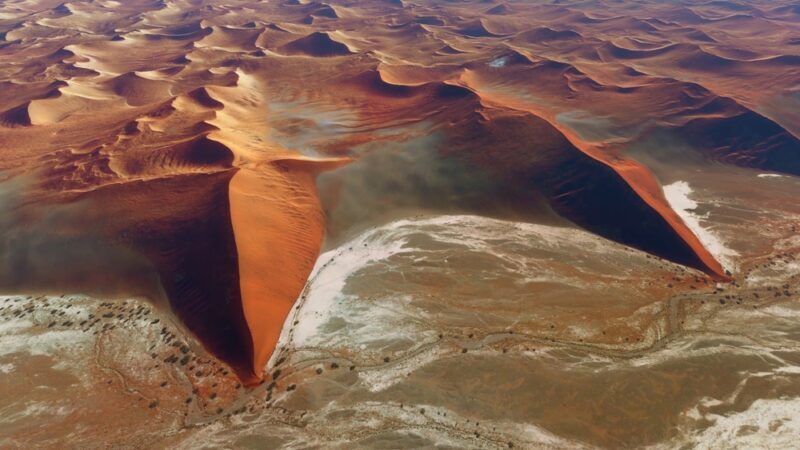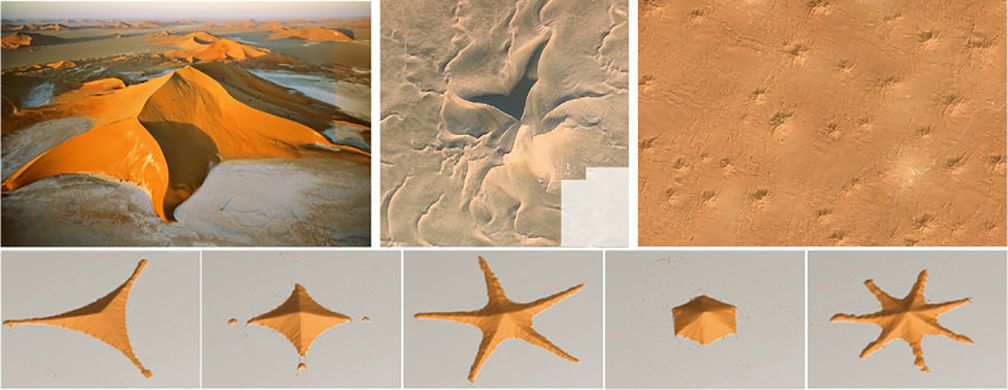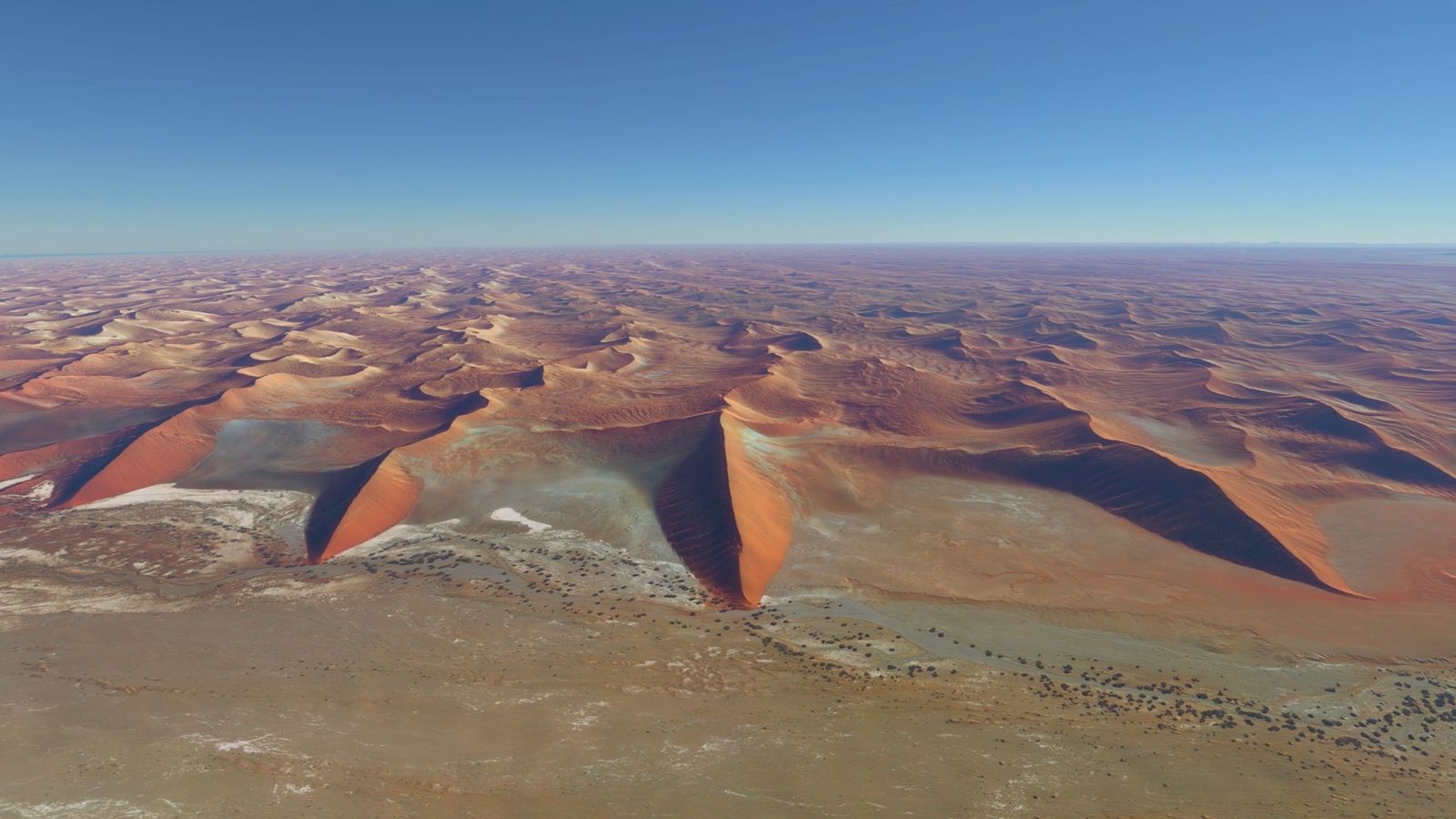The largest dunes on Earth, star dunes reach hundreds of meters high. You can see them in Africa, Asia, North America, and even on Mars and one of Saturn’s moons. Until now, we weren’t sure how the giant pyramid-shaped dunes formed.
A research team from Aberystwyth University has been studying the Lala Lallia dune in the Erg Chebbi region in Morocco. Using radar scanning, they mapped the internal structure of the star dune.
It was no easy task. The team walked back and forth across the moving sands, stopping every half meter as the radar produced high-resolution images of the sediment layers that make up the dune.
Radar and sand cores
By taking sand cores, they could collect grains from different sections and depths. Analysis suggests that the base of the dune formed 13,000 years ago. They did not figure this out from the age of the sand grains themselves. The grains are likely millions of years old. Instead, they were looking at the quartz within each grain.
“The grains of quartz have a property like a mini-rechargeable battery,” co-author Geoff Duller explained.
The quartz absorbs environmental radiation. Daylight would usually wipe this out, but trapped in the center of a dune, there is no light. Once in the lab, the researchers could get the grains to release the energy they absorbed from the radioactivity as light.
Using luminescence dating, they then measured the brightness and worked out the age of the various layers of sediment. The brighter the light, the older the sediment.

Star Dunes in the Namib Desert. Photo: Shutterstock
A sudden growth spurt
They had assumed that star dunes gradually grew over time, eventually reaching the enormous heights we see today. But this is not the case. The dune barely grew in its first 12,000 years.
“It turned out to be surprisingly young,” said Duller. The base grew for around 3,000 years, then growth stalled until 1,000 years ago. Since then, there has been rapid growth.
Wind blowing in opposite directions formed the dune. Winds from both the southwest and northeast cause the sand to build up into a giant mound. If you look at a star dune on foot, you see the classic pyramid shape, but from above it looks very different.

A collection of star dune images from George Steinmetz and Google Earth. Photo: Dune Morphodynamics/Researchgate
“From the air, you see a peak, and radiating off it in three or four directions, these arms that make them look like stars,” Duller told CNN.
Surprisingly, the Lala Lallia dune is also moving. It covers around half a meter each year. This is also a result of the wind blowing in from the east, causing the dune to creep west.
“Knowing how fast these things are moving is quite important when you’re thinking about building roads, pipelines, or any sort of infrastructure,” said Duller.






